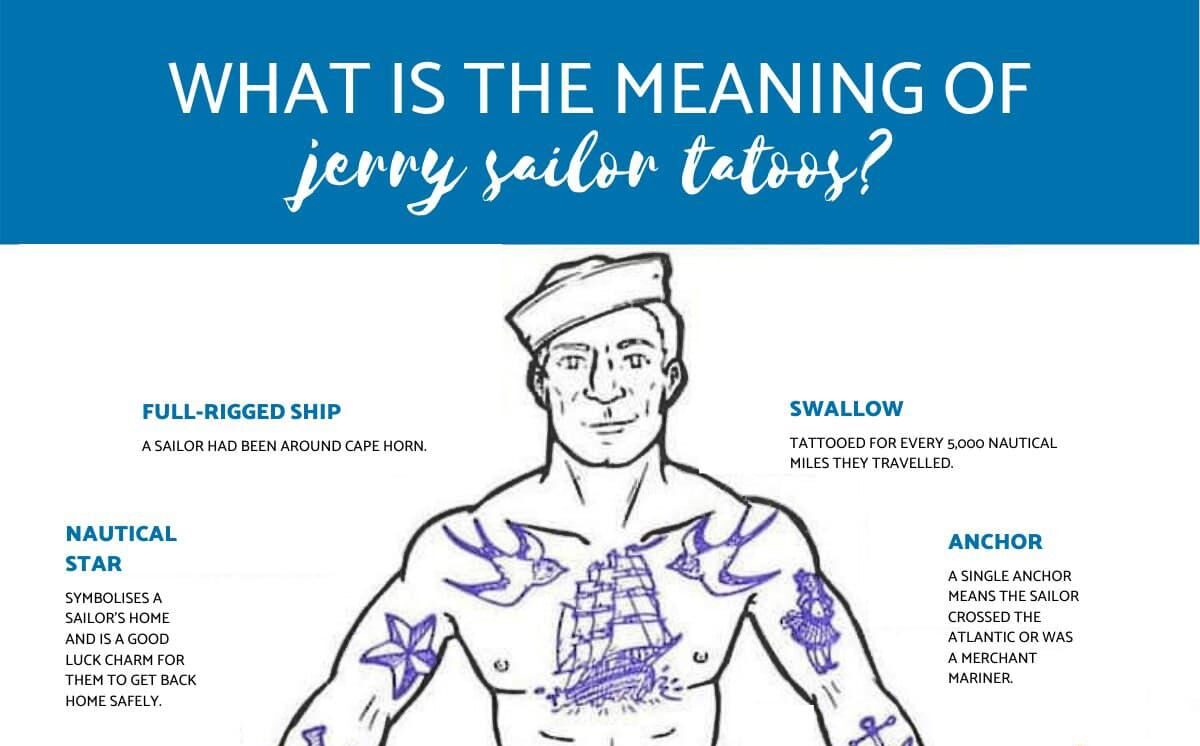What is the Meaning of Sailor Jerry Tattoos?
Sailor Jerry tattoos have become a popular choice for many people looking to get inked. These tattoos are known for their bold lines, vibrant colors, and iconic imagery. But what is the meaning behind Sailor Jerry tattoos? And how did they come to be so popular in the tattoo world?
The History of Sailor Jerry Tattoos
Sailor Jerry tattoos are named after Norman Keith Collins, who was a prominent American tattoo artist also known as Sailor Jerry. He was born in 1911 and began tattooing in the 1920s, when tattoos were still seen as taboo in American society. Sailor Jerry was influential in turning tattooing into a respected art form, and his designs became iconic within the industry.
Sailor Jerry’s style was heavily influenced by his time spent in the Navy, which is where he developed a love for American traditional tattooing. He was known for his bold, iconic designs that reflected his love of American folk art and traditional nautical imagery. Sailor Jerry was also an avid traveler, and his experiences in Southeast Asia greatly influenced his tattoo designs, incorporating elements of Asian art and culture into his work.
The Meaning Behind the Designs
Sailor Jerry tattoos often feature classic nautical themes such as anchors, ships, swallows, and pin-up girls. These designs hold deep symbolism that dates back to the early days of tattooing.
Anchors, for example, are a common motif in Sailor Jerry tattoos and are often seen as a symbol of stability and strength. In nautical tradition, an anchor represents a strong foundation and the ability to weather any storm. Sailor Jerry himself often used the anchor in his designs, and it remains one of the most iconic images in traditional American tattoos.
Swallows are another common motif in Sailor Jerry tattoos and are often associated with sailors. In traditional naval folklore, a swallow represents a safe return home. Sailors believed that if they were lost at sea, the swallow would carry their soul to heaven. This symbolism made the swallow a popular choice for sailors getting tattooed as a form of protection and good luck.
The Influence of American Folk Art
Sailor Jerry’s designs were heavily influenced by American folk art, which is characterized by its bold lines, bright colors, and simplistic imagery. He drew inspiration from classic American themes such as eagles, hearts, and roses, and incorporated them into his tattoo designs.
The iconic imagery of Sailor Jerry tattoos has remained popular over the years, and many people continue to get inked with his timeless designs. The bold lines and vibrant colors of Sailor Jerry tattoos have made them a favorite among tattoo enthusiasts, and they are often seen as a representation of American heritage and traditional tattooing.
The Legacy of Sailor Jerry Tattoos
Sailor Jerry’s influence on the world of tattooing cannot be overstated. His iconic designs have stood the test of time and continue to be a popular choice for those looking to get inked. Many tattoo artists today still draw inspiration from Sailor Jerry’s work, and his legacy lives on in the world of American traditional tattooing.
In recent years, there has been a resurgence of interest in Sailor Jerry tattoos, with many people seeking out his designs as a way to pay homage to the rich history of American tattooing. His bold, timeless designs continue to be a staple in tattoo culture, and his influence can be seen in the work of countless artists around the world.
In Conclusion
Sailor Jerry tattoos are more than just bold, iconic designs – they represent a rich history of American traditional tattooing and reflect the influence of American folk art and nautical imagery. The meaning behind Sailor Jerry tattoos lies in their timeless symbolism and the legacy of their creator, Norman Keith Collins. Whether you’re a seasoned tattoo enthusiast or someone considering getting inked for the first time, Sailor Jerry tattoos are a powerful choice that pays homage to the roots of American tattoo culture.

